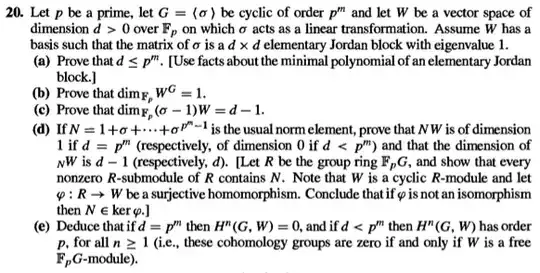For any group $G$ and $G$-module ($\mathbb{Z}[G]$-module) $M$, we can define a group cohomology $H^{n}(G, M)$ as
$$ H^{n}(G, M):=\mathrm{Ext}_{\mathbb{Z}[G]}^{n}(\mathbb{Z}, M). $$ However, I think one can replace $\mathbb{Z}$ with other rings $R$, if $M$ is $R$-module and $G$ acts on it (i.e. $M$ is $R[G]$-module). We can define $$ H^{n}_{R}(G, M):=\mathrm{Ext}_{R[G]}^{n}(R, M). $$ Is there any reference about this cohomology group? Actually, there is an exercise about group cohomology of finite dimensional $\mathbb{F}_{p}$-vector space in Dummit-Foote Algebra (Exercise 20, 21 of chapter 17.2). In this case, it seems that we are computing cohomology group when $R=\mathbb{F}_{p}$, not $\mathbb{Z}$. Also, is this group is useful for number theory? Thanks in advance.
